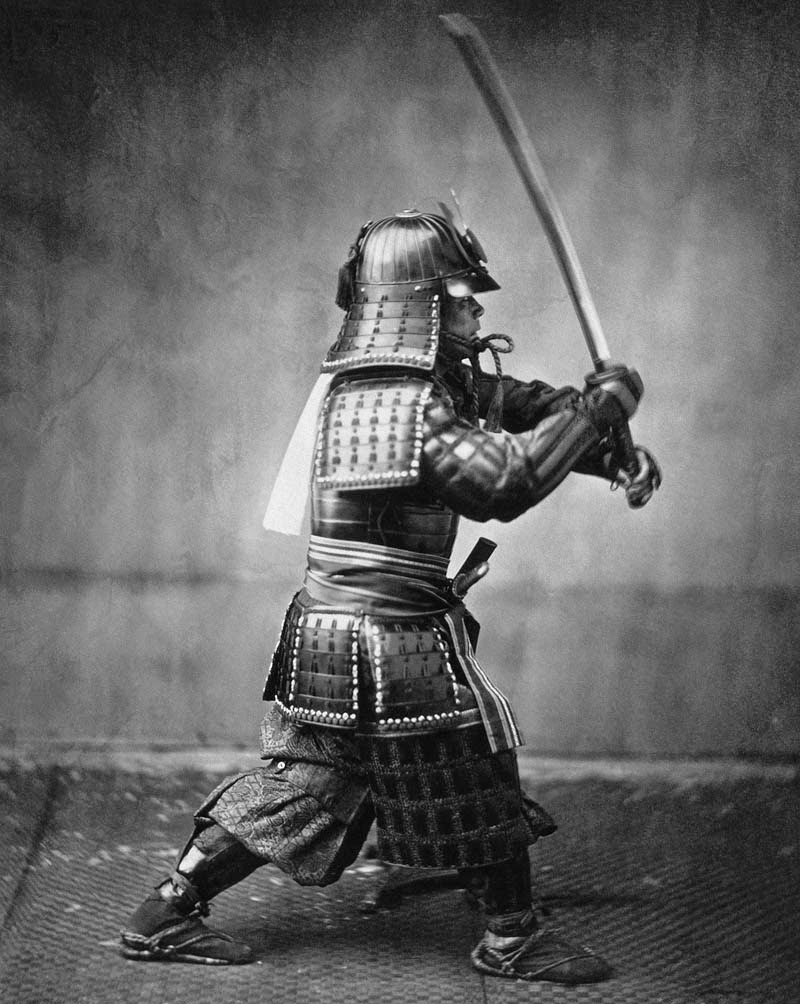The Pride of a Samurai's Sword
Posted by Sword N Armory on Jun 19th 2017

While a samurai warrior used many weapons to defend himself and to fight for his lord, none were more prized or more important than his long, curved sword, the katana. In fact, the code a samurai lived by said the warrior's soul was his sword. From the time a samurai was born to the day he died, the katana was a part of his life. Swords would be brought into the birthing chamber when a new samurai was about to be born. When a Samurai's time of service came to a close, the sword would be placed at the warrior's side, his lord believing he could still call on this faithful servant.
These precious swords, capable of slicing through flesh, were passed down from father to son, much like the education of a samurai was passed down from one generation to the next. Fathers and close relatives began a young samurai's instruction around the age of three, teaching fencing by using pieces of wood and staffs. By age five, the young warrior would be issued a sword so he could defend himself against the dangers that were ever present.
He was also expected to learn to read, write calligraphy and preserve the culture of his society, taking part in ceremonies such as the tea ceremony, and writing poetry. Women, too, were trained in marital arts and strategy, specifically how to use smaller swords, though not the revered katana sword.
Part of the samurai's duties would be to care for his sword. In fact, he should be the only one to touch it, unless visiting a friend. Then it would be given to a trusted servant in the household. At home, the sword was to be cleaned daily. Even fingerprints could lead to rust, and the sword was to be kept pure and ready for service. It was kept in a place of honor in the home.
The forging of such a weapon was not left to any cutler. Priests would often bless the sword-making process and the cutler undergo spiritual purification.
It took three days to smelt 25 tons of river sand and charcoal in a specially-designed clay furnace to produce two tons of “jewel steel,” the metal tamahagane. Sword-makers had to keep a delicate balance, with layers of high-carbon steel combined with low-carbon steel in order to produce the razor-sharp edge with a blade that could absorb impact with shattering.
Some sword-makers signed their work, as most signatures would be carved into the metal. For example, swords crafted during the World War II era may also have arsenal stamps or other markings. These markings would be found in the tang, the portion of the sword covered by the handle. Wooden pegs secure the handle, but can be easily removed to reveal a signature. The signature would tell the date the sword was made, the sword-maker's name, and the city where it was crafted. Signatures are either five or seven characters. In some instances, sword-makers would include engravings that would be related to the dedication of the warrior who would wield the weapon, saying "I gladly give my life."
The swords have a square or circular guard and a long grip that would allow a warrior to wield it with two hands in battle. Some warriors fought with two katana swords. These swords at the end of the day were basically their life. The true meaning of the words, “live and die by the sword” were what they were trained to know and live by.










